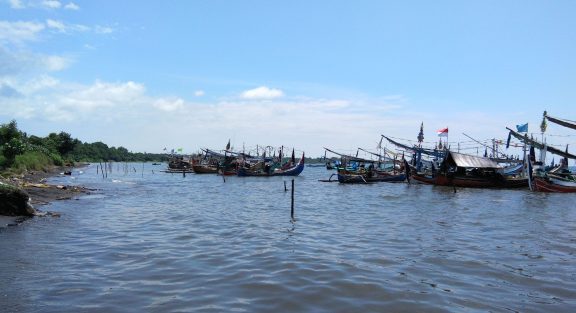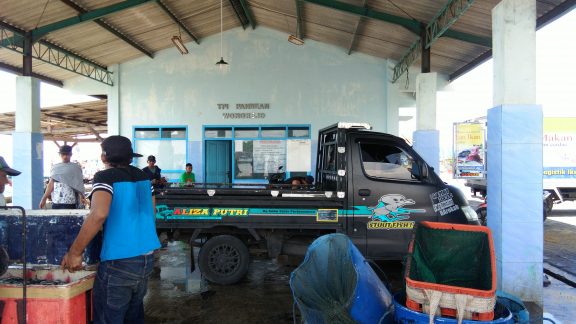The first phase of our bycatch reduction trials are coming to an end, and we still have one important task to complete. Perception interviews enable us to gather important feedback and information from the fishers who have been piloting our bycatch reduction technologies. However, we faced a problem conducting these interviews, as we could only find three of our twenty fishers around the fishing port of Muncar.
Over the past few weeks we had noticed that the middlemen or Pengambak were handling fewer fish, and that many fishers were recording zero catches in their logbooks. With the changing monsoon season, many of Muncar’s fishers leave the town and head north, following the schools of fish.
We first heard about a place named Pandean Beach from two of our participating fishers who had visited the been there at the end of last year. Pandean Beach is located at the northeast corner of East Java, on the margins of Baluran National Park. It used to be a fishing village similar to Kalimoro Village in Muncar, but several years ago the local government began to develop the beach as a tourist area.
We decided to visit Pandean Beach, to meet and interview our fishers, and to learn more about the seasonal dynamics of this fishery and surrounding fishing ports. The fishers reach Pandean Beach by sea, sailing north for five hours. We went overland, catching a bus from Muncar to Batangan, 70 km to the north, and then taking a motorbike taxi or ojek to Pandean Beach.

In Pandean fishers tie their boats to the beach
After an early start, we arrived at Pandean Beach just before 7 am. Pak Baharudin, one of our fishermen, met us and showed us around. Pandean Beach faces the north Bali Sea, with Baluran Mountain behind. The community is much smaller than Muncar, with only one fish landing station and one cold storage. As we got to the beach, the fishing boats were just beginning to return from the sea.
The fishers recognised us straight away, and sat down to chat. We noticed that only the fishers whose boats were strong and have two engines had made the journey to Pandean. We talked about the fishing conditions, and the local fish markets and supply chains.
Their fishing schedule in Pandean is similar to that in Muncar. Fishers return to the beach in the early morning to men will arrive on the beach in the morning and fix their net and boat after. Every day fishers spend the afternoon resting in a local house they have rented together with other fishers from Muncar. At night the go fishing, departing earlier than they do in Muncar. The fishing grounds are further away, southeast from Madura Island and in the north Bali Sea. They still target swordfish and neritic tuna in this area, and mobula bycatch still also occurs.

Pandean has one fish landing port located in Wonorejo Village
In Pandean there are at least four local Pengambak as well as Pengambak fromBanyuwangi and Muncar. The Pengambak sell their fish throughout Banyuwangi district. Fishers receive less money for their catches in Pandean, because Pengambak have higher fuel and transport costs. This is one of the reasons that the fishers prefer to stay in Muncar, where they can be close to their family and don’t have the additional cost of rental accommodation.
It was interesting to learn more about the dynamics of this fishery, which have important implications for the management of both target stocks and bycatch mitigation. In Muncar fishing authority lies under the jurisdiction of Banyuwangi district government, whereas in Pandean the management authority is Situbondo district government. It is clear that, under the guidance of East Java provincial government, these districts will need a coordinated approach to manage their marine resource sustainably.
Furthermore, at this time of year Pandean Beach attracts fishers from other locations in addition to Muncar. This provides a great opportunity to share information and experiences from our bycatch mitigation trials with a wider audience, and prepare for scaling up during Phase Two later this year.


